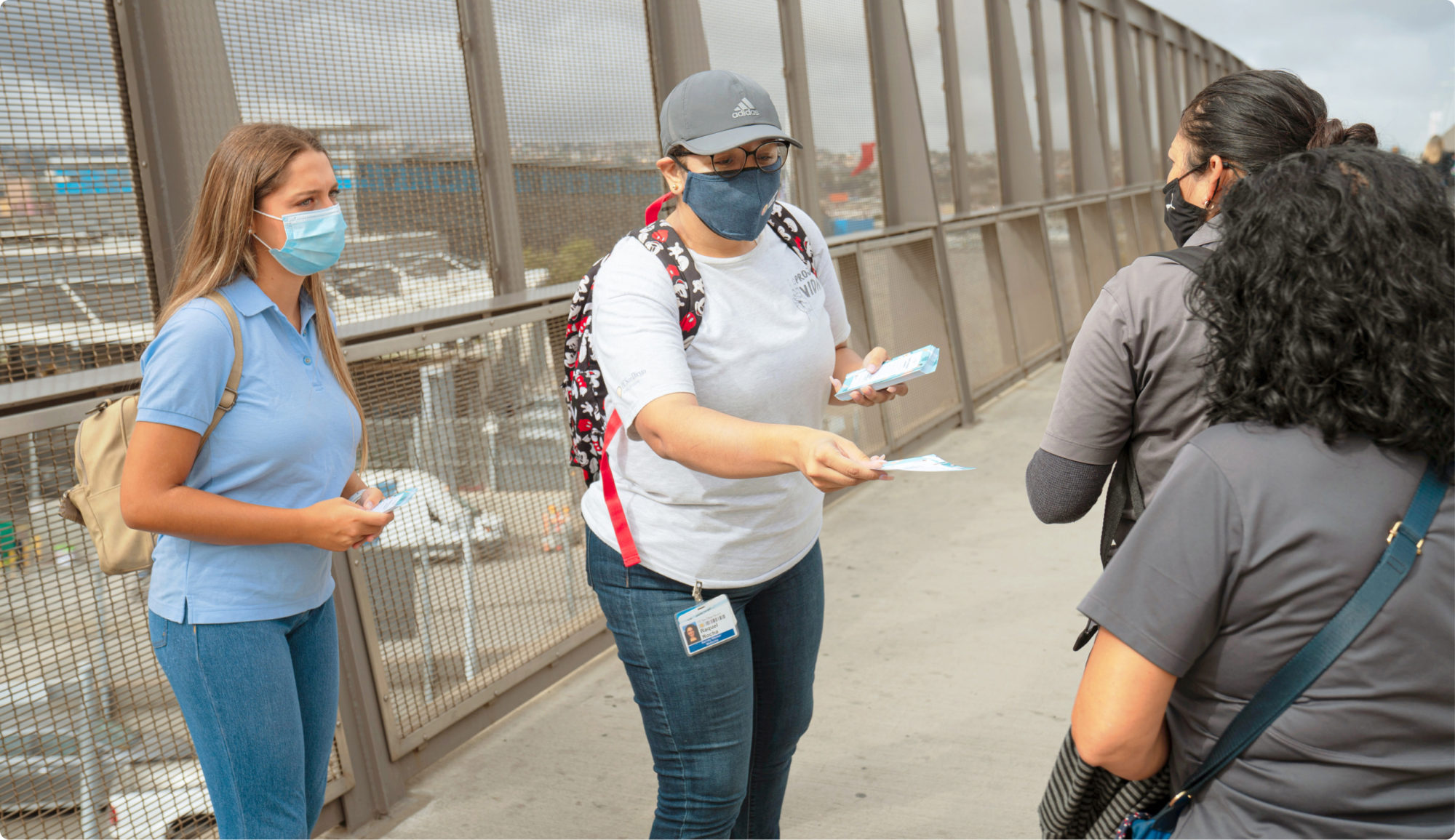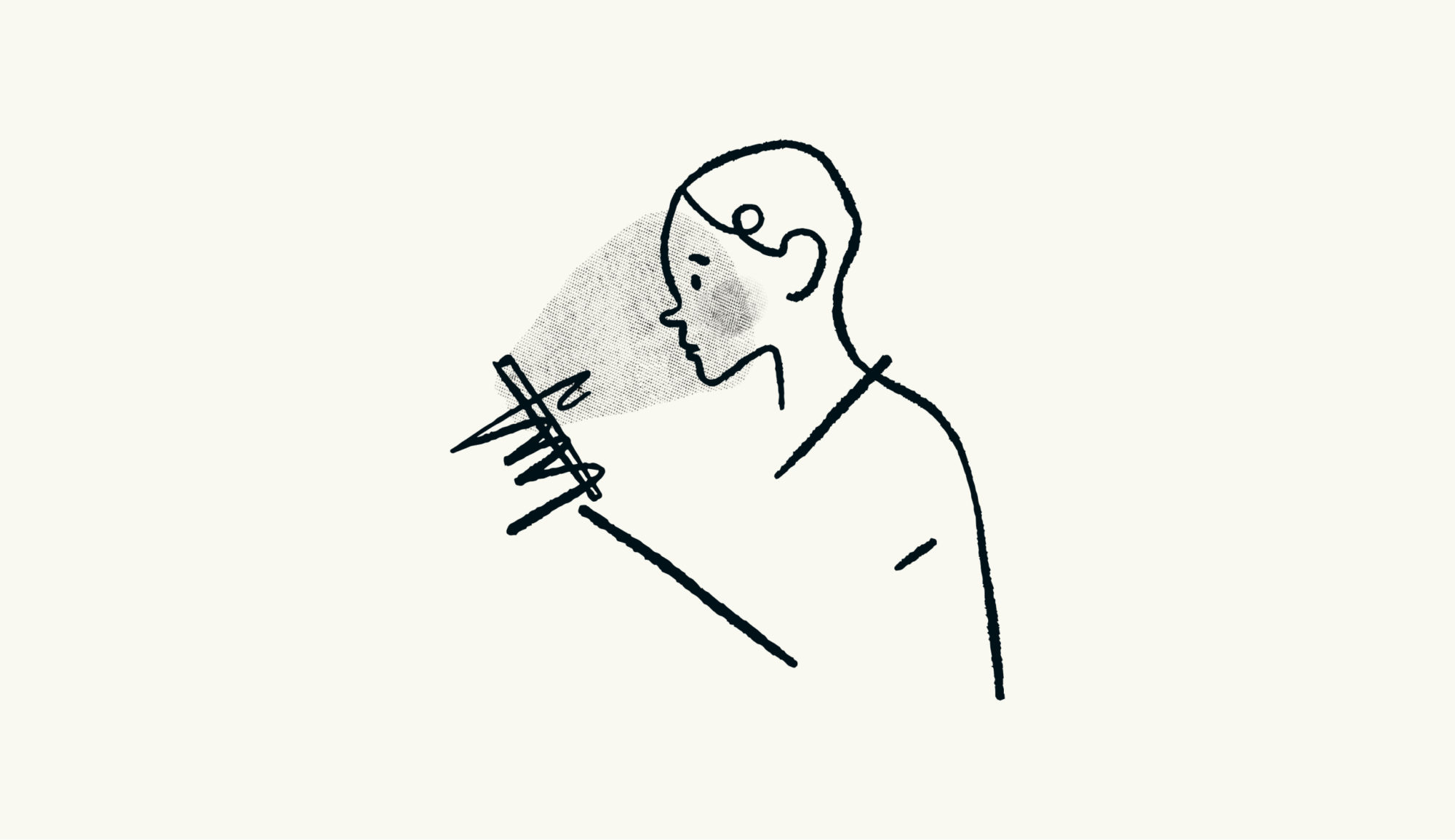— Education
MAKING HOUSE CALLS DURING A PANDEMIC
Public health has never been more important

When COVID-19 first became publicly available, demand overwhelmed supply, prompting urgent, even desperate, online searches for scarce appointments, followed by long lines and hours of waiting at super stations and clinics.
But after the initial, eager throngs had bared their deltoid muscles to needles inoculating them against the SARS-CoV-2 virus, crowds thinned and in time super stations — temporary facilities erected to vaccinate large numbers of persons quickly and safely — were closed.
Hundreds of millions of Americans have received at least one dose of vaccine. Roughly half of the nation’s population has been fully vaccinated. But early data also exposes a stark truth: Underrepresented groups in the United States are bearing a disproportionate number of COVID-19 cases and deaths and are accessing vaccines at much lower rates.
“There is no genetic predisposition to COVID-19. People of color are severely impacted because of social determinants of health and disparities that have not been addressed,” said Argentina Servin, MD, MPH, assistant professor in the Division of Infectious Diseases and Global Public Health at UC San Diego School of Medicine. “In a high-income country, like the U.S., we should not see these disparities and gaps.”
— Argentina Servin, MD, MPH“In a high-income country, like the U.S., we should not see these disparities and gaps.”
After watching friends and family suffer, and nearly losing her 80-year-old grandfather, Servin applied for and received a $3 million grant from the National Institute on Minority Health and Health Disparities, part of the National Institutes of Health, to design a program to increase outreach, access and use of COVID-19 vaccines among Latinx and Black communities in six of San Diego’s most heavily affected neighborhoods.
Dubbed “Project 2VIDA!,” Servin and colleagues formed an intervention working group comprised of representatives from community and academic organizations to address challenges in the communities of San Ysidro, Chula Vista, National City, Logan Heights, Lincoln Park and Valencia Park.
The approach was founded on community-based participatory research. Rather than sit behind computers, the team donned their most comfortable walking shoes and canvassed homes and greeted patrons at cafés, grocery stores and other local businesses, engaging residents with questions related to vaccine hesitancy, addressing widespread misinformation and encouraging them to be vaccinated at one of the Project 2VIDA! mobile vaccine units or with its collaborator San Ysidro Health.
But public confidence in vaccination is fragile, especially among communities long suspicious about historical or institutional motivations. Servin said Project 2VIDA! is fighting an uphill battle against myths. Individuals say they do not want to be immunized for fear that the vaccines carry microchips that track their movements. They fear vaccine-induced infertility or safety due to a “rushed” launch. These misconceptions are all false, yet unfortunately common, experts say.
— Adriana Bearse“We have to remind community members that vaccines have helped save millions of lives. Just a few generations ago, people lived under the constant threat of deadly infectious diseases, like smallpox, polio, hepatitis and the flu.”
“We have to remind community members that vaccines have helped save millions of lives. Just a few generations ago, people lived under the constant threat of deadly infectious diseases, like smallpox, polio, hepatitis and the flu,” said Adriana Bearse, promotion manager in the San Ysidro Health Research and Health Promotion Department.
Because the COVID-19 vaccine is an important part of stopping the pandemic, Servin said Project 2VIDA! seeks to implement and assess a COVID-19 vaccination protocol and establish a model for the rapid vaccination of Latinx and Black adults that can be implemented in other impacted communities.
Beyond community
borders
Since no virus, recognizes borders, the binational region comprised of San Diego and Baja California, Mexico is significantly impacted by the pandemic.
Linda Hill, MD, MPH, professor and interim assistant dean for Community Border Health Partnerships in The Herbert Wertheim School of Public Health and Human Longevity Science at UC San Diego, has spent most of her career addressing the public health needs of migrant workers, immigrants and refugees.
In late-2018, Hill began supporting government agencies with health screenings for asylum seekers entering the U.S., using a congregate sheltering model. At the time, she and a team of community and UC San Diego Health doctors were treating infectious diseases, such as scabies, chickenpox and influenza, but nothing as severe as COVID-19.
Since starting the asylum program in 2021, qualifying persons are now housed in hotel rooms to reduce the risk of contracting and spreading COVID-19. Hill and her team of community health workers and medical providers screen for COVID-19 and conduct house calls for approximately 250 guests per day, checking on pregnant women, providing hypertension medicine and other medications, and caring for acute illnesses. The team has been working seven days a week since March 1, 2021.
It’s a labor of love made up of a community of students from UC San Diego, San Diego State University and the University of San Diego; community health workers; medical residents from UC San Diego Health, Kaiser Health and Scripps Health; and clinicians from UC San Diego Health and the community.
— Linda Hill, MD, MPH“With 200 arrivals a day, and the challenges of travelers in a pandemic, in no time at all you have 600 people under your care.”
“With 200 arrivals a day, and the challenges of travelers in a pandemic, in no time at all you have 600 people under your care,” said Hill. But Hill said the long hours are worth it, with the added bonus of having trainee participation.
“We are building future public health professionals who will understand and care for displaced populations, who will be committed to providing culturally competent care and who will address diversity and equity,” she said.
Hill has also been involved in projects managing the impact of COVID-19 on vulnerable populations in Mexico. Early in the pandemic, the Mexican border town of Tijuana was devastated by severe cases of COVID-19 and local hospitals experienced shortages of personal protective equipment for health care providers treating critically ill patients.
UC San Diego Health formed Aliados por Salud, a volunteer team of critical care doctors, nurses and respiratory therapists who collaborated daily with counterparts at Tijuana General Hospital to combine their knowledge and experience on how best to treat patients diagnosed with COVID-19.
For six months, the two hospital systems worked and learned together to manage severe cases and to secure donations of masks, face shields, goggles, pulse oximetry units and other supplies for Tijuana General Hospital.
In 2021, Hill and other UC San Diego colleagues, including Timothy Rodwell, MD, PhD, MPH; Richard Garfein, PhD, MPH; and Steffanie Strathdee, PhD, joined the Consulate General of Mexico in San Diego and various health agencies and universities in Baja California to conduct a survey of the prevalence of COVID-19 in the Mexican cities of Tijuana, Mexicali and Ensenada.
“This project is an example of binational cooperation and collaboration — government, academia and non-governmental organizations coming together to design public policies for the prevention, management and eventual eradication of COVID-19,” said Hill.
“Working directly in the communities most affected by disease or illness allows us to find innovative solutions that address unique challenges and have the greatest impact where it is needed most.”








